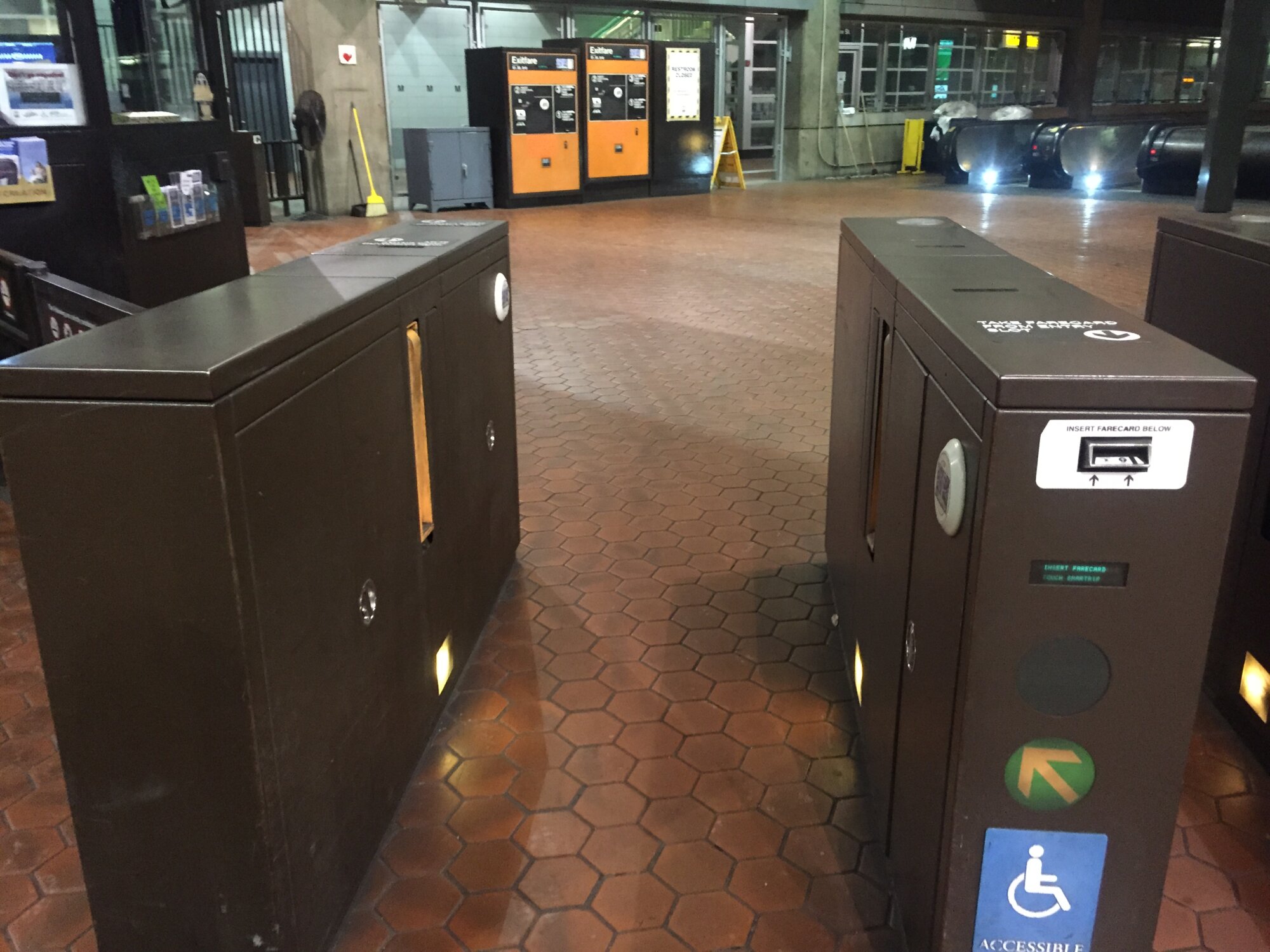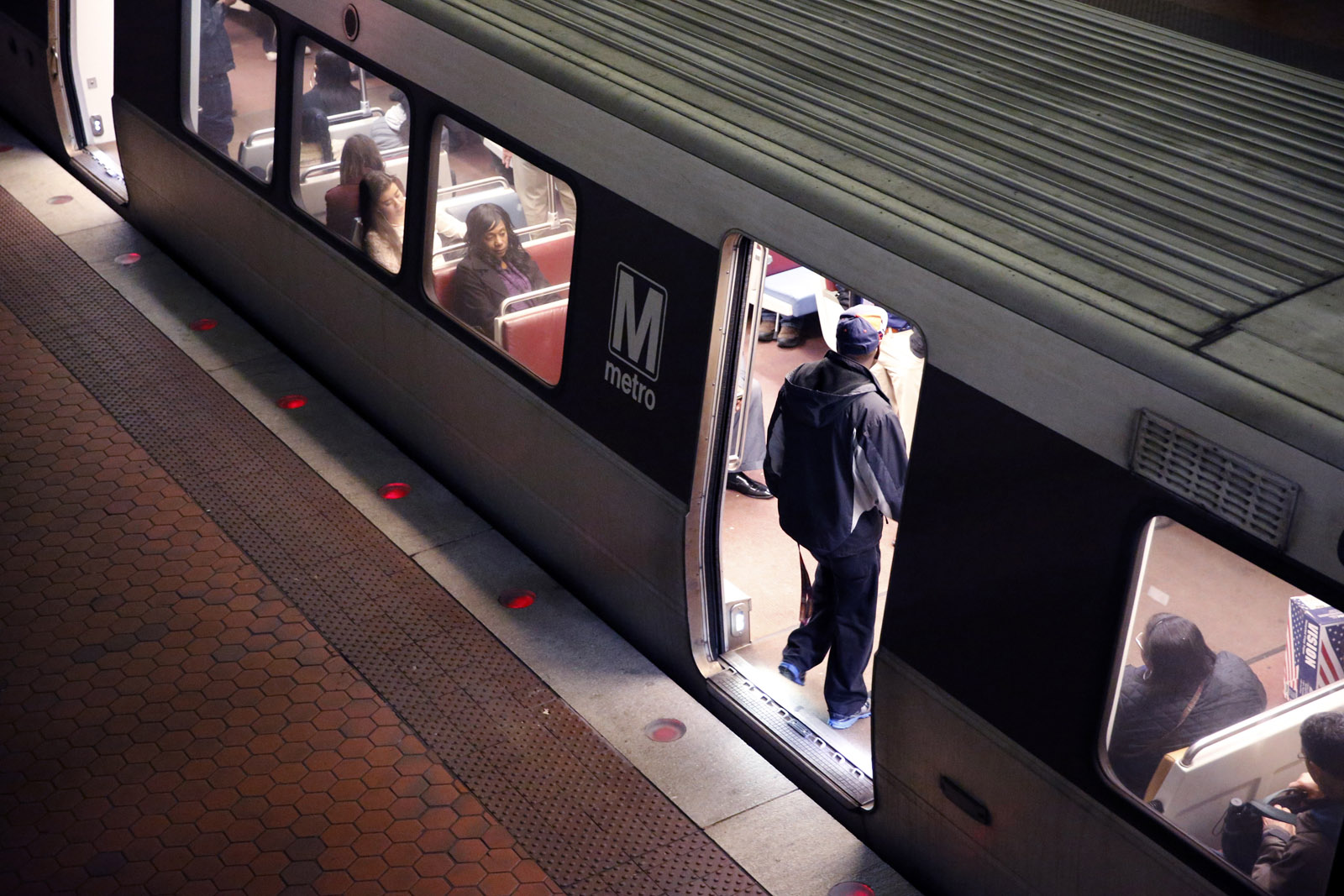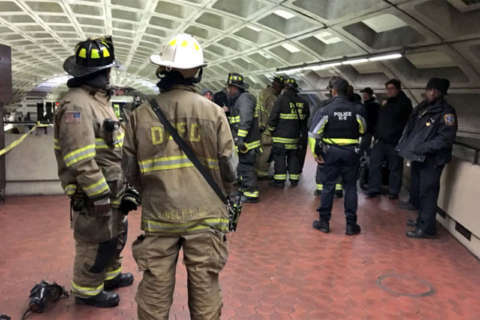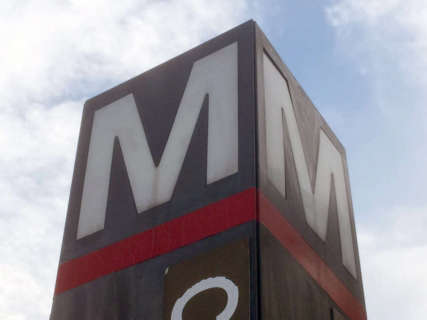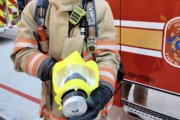WASHINGTON — After a Red Line train derailed in a tunnel in January, Metro said the rust on the rail that snapped would have been undetectable. Now, Metro’s chief safety officer says additional scanning the agency is starting could have provided key hints.
A Metro consultant’s final report on the derailment — which still must be approved by the Federal Transit Administration — blamed it on rusting underneath the rail that eventually led to a crack due to the pressure from the weight of trains bending the rail up and down. This was in addition to possible issues with the rail sliding back and forth on the supporting concrete that would have been exacerbated by temperature changes in the tunnel between Farragut North and Metro Center.
“The report states this type of failure would have been undetectable with conventional ultrasonic testing,” Chief Safety Officer Pat Lavin told the Metro Board’s safety committee Thursday.
However, he also told the committee that new testing Metro is implementing could have flagged the rusting problem before the Martin Luther King Jr. Day derailment.
“We talked about the corrosion where this derailment occurred as not being detectable. Will this rail base corrosion system, will this give us hints on where to look for additional damage?” Metro Board Member and Federal Railroad Administration Chief Safety Officer Bob Lauby asked.
No one was seriously hurt in the incident.
“Yes, it’ll give you better opportunities to identify those types of defects,” Lavin said.
Metro also hopes to come up with plans to address water getting into the most troublesome parts of the system, and to focus on stray current testing as promised when the agency cut back hours last year.
New tests could flag corrosion
Rail base scanning, a high tech measurement of the width of the base of the rail, is being completed over the next week to compare to similar 2015 tests. The comparison can catch minuscule changes in the width that would indicate rusting or other issues below.
Metro also plans to increase ultrasonic testing of the rails from twice a year to three times a year, and has hired a contractor that has more advanced technology than what Metro uses today.
“This system appears to be right now a little bit superior to what we were currently using,” Lavin said.
“Ultrasonic testing examines the running rails to identify internal rail defects that can lead to rail breaks. This is similar to taking an X-Ray of an arm to determine if it is broken,” he explained.
The contractor’s system can detect issues three times earlier than Metro could, identifying defects at the 10 percent level.
“A 10 percent defect doesn’t necessarily pose a threat, but you want to know about it earlier, and then if we could use that information for trend analysis purposes, if we have an area where a particular type of rail or a certain vintage is getting a lot of these 10 percent hits, then that’ll drive the capital program to change those rails if that’s what the data reflects,” Lavin said.
Evacuation
Metro has now promised to more quickly cut power and evacuate riders in the event of a derailment.
One problem is that Metro did not initially know this train had derailed until about 20 minutes after the incident, since it was initially reported as a smoke incident through garbled internal Metro radio transmissions.
“Currently, there are zero radio defects in the system,” Lavin said Thursday.
Metro had to fix the uplink systems in the area for its internal radios. More outside consultants are being hired to support radio testing in tunnels and to evaluate whether those checks should be done more frequently.
Metro is also separately scanning the system in high definition video to update conditions of the tracks, particularly the concrete that supports rails in tunnels and on aerial structures, and to compile an inventory of the rail manufacturer and production date of all the rails in the system. That could help identify trends in cracked rails, Lavin said.


